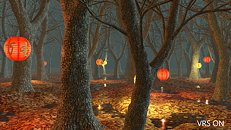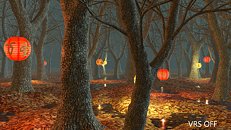Monday, August 26th 2019

3DMark Introduces Variable Rate Shading Benchmark
3DMark today announced they've introduced a new benchmarking feature. Specifically developed to test Variable Rate Shading (VRS) performance and image quality differences, the new feature allows users to actually visualize the performance and image quality differences associated with more aggressive (or less aggressive) VRS settings. The algorithm is a smart one - it aims to reduce the number of pixel shader operations on surfaces where detail isn't as important (such as frame edges, fast-moving objects, darkened areas, etc) so as to improve performance and shave some precious milliseconds in the deployment of each frame.
To run this test, you will need Windows 10 version 1903 or later and a DirectX 12 GPU that supports Tier 1 VRS and the "AdditionalShadingRatesSupported" capability, such as an NVIDIA Turing-based GPU or an Intel Ice Lake CPU. The VRS feature test is available now as a free update for 3DMark Advanced Edition, or from now until September 2, 3DMark is 75% off when you buy it from Steam or the UL benchmarks website.
To run this test, you will need Windows 10 version 1903 or later and a DirectX 12 GPU that supports Tier 1 VRS and the "AdditionalShadingRatesSupported" capability, such as an NVIDIA Turing-based GPU or an Intel Ice Lake CPU. The VRS feature test is available now as a free update for 3DMark Advanced Edition, or from now until September 2, 3DMark is 75% off when you buy it from Steam or the UL benchmarks website.



24 Comments on 3DMark Introduces Variable Rate Shading Benchmark
Is miss the days Nvidia was always playing catch up.
I'm new to all this, apparently it's all easily done in software anyway.
Nvidia Adaptive Shading in Wolfenstein:Youngblood
www.nvidia.com/en-us/geforce/news/nvidia-adaptive-shading-a-deep-dive/
Edit: actually it's not just one tree - there are many trees with this issue.
Edit 2: also there's something wrong with the leaves on the ground. They look pixellated.
Whether or not this is good... of course it is. Rendering will always be full of trickery and it already is. As long as your perception of the image is still good, no harm done. That being said, I do see where VRS cuts the corners, unfortunately. Needs careful application.
Mind blown.
benchmarks.ul.com/hwc/tmp/3dmark-vrs-feature-test-screenshot-vrs-on.png
benchmarks.ul.com/hwc/tmp/3dmark-vrs-feature-test-screenshot-vrs-off.png
VRS is there to increase performance at HOPEFULLY no image quality cost.
But as we can, I think, all see, the image quality loss is very noticeable.